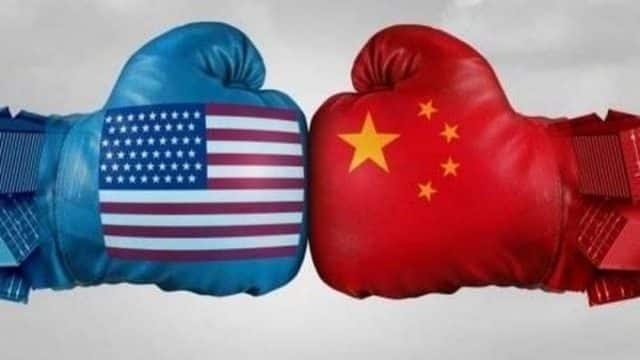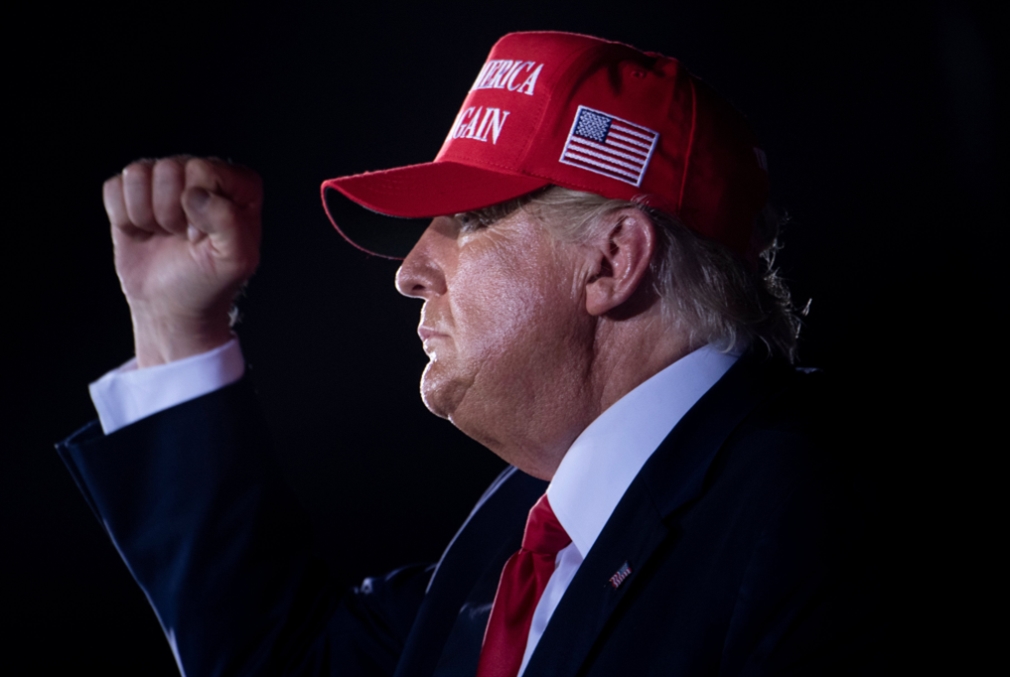September 13, 2020
by Allen Yu for the Saker Blog
Recently, I wrote a short comment in the piece India’s border policies line with Thalassa noting that “India is on the wrong side of history.” It was too “conclusory” a comment deserves to be better explained. So I’d like to take a brief time why I think India is on the wrong side of history in siding with America against China today.
I’d first like to take a larger view of history.
Historical Context
Human history has for the most part gotten better over the last few tens of thousands of years. Our technology has advanced. Our life expectancies have increased. The last 200 or so years have seen the most explosive advances. The pace of scientific and technological advances has created a world beyond the wildest dreams of our ancestors.
And if we believe that the human spirit of ingenuity will continue, as there is no reason not to, then the best is still yet to come. 90% of all scientists that have ever lived are alive today. If we can have peace and the world allowed to be free from hegemonic oppression, I’d say the future is bright for the human species.
Unfortunately, ominous dark clouds have hung over the world despite all the positive momentum of history. We live in a time of great paradoxes. Though the world is currently in a “time of peace,” with technologies and economies fast advancing, in relative overall prosperity, sponsored Color Revolutions and civil wars have been unleashed upon many nations, devastating regions from Iraq to Afghanistan to Ukraine to Egypt to Syria to Hong Kong. Economic sanctions have ravaged whole generations of peoples in regions from N. Korea to Turkey to Iran to Venezuela.
WWII by most accounts represents a righteous high point in history. It represents the defeat of the axes of fascism and colonialism. Yet, fascism and colonialism never left us. It got transformed and embedded into our new world.
The more things changed, the more we realize that many things haven’t changed. The poor and disposed of the colonial era are for the most part still poor and dispossessed. Russia is still the target of Western aggression after hundreds of years of antagonism. Even China – the presumed challenger to the West – has not escaped the trajectory of this history. Western powers – with their allies – are now actively scheming and working hard to suffocate China economically and technologically in an attempt to shove it back to a place of perpetual subservience to Western interests.
Some may argue say that Russia and China’s problems are that both had overplayed their hands. Russia had overextended itself in Eastern Europe and the Middle East, and crossed the West’s “red line” in Ukraine. China has crossed the “red line” in the S. China Sea, Hong Kong, Xinjiang, etc.
The truth is that it is the West that has crossed the line in Europe, the Middle East and in Ukraine … and in S. China Sea, Hong Kong, and Xinjiang.
India’s Strategic Blunder
It is at this critical juncture that India has decided to pivot toward the West. India is making a gigantic strategic mistake. Here are some reasons why.
- It does not make sense to make an enemy of 1.4 billion people. It’s is one thing to fight a border war, but it is quite another to actually join a group of others to contain the development and growth of 1.4 billion people. The wrath and actions coming out of the U.S. against China has been truly surprising and depressing. It is against the basic rights and dignity expressed in the UN charter. Why should India join that chorus? Chinese have no animosity toward the Indian people. However, the Indian populace – fanned by an irresponsible media with much rumors and fake news – has allowed itself to be whipped into a giant anti-China frenzy.
- America – and the broader West – will not help India to develop. Many Indians fancy that India – after America decouples from China – will take the place of China and that the West is going to help pull India out of poverty the way it has helped to pull China out of poverty. That is just not going to happen. There are a few reasons for this.
- First, America has squandered much of its capital since becoming the sole superpower with its endless wars since the fall of the Soviet Union. America today thinks the world as set up after WWII is set against it, with much of the world leaching off America’s largess. America will have no more of it. Enough has been enough! Never again will America work for another country!!! America now wants the world to serve it, not the other way around. If Indians think America had pulled China out of poverty (Chinese mince at that notion since they believe it is they themselves who pulled themselves out of poverty), they can rest assured America will not be able to do the same for India.
- Second, the West has come to see the world not in win-win terms, but in zero sum terms. For a brief while, the West did experiment with some version of win-win globalism. While it infused globalism with its own suffocating ideologies and rules to benefit itself, it did for a while work on a flatter world. In this “flat world,” people the world over get to exchange ideas and goods and services with each other, for each other’s own benefits, all in a win-win fashion. But that period soon ended. It’s not just Trump. It’s the whole establishment and populace. The jealousy by which the West has come to guard their knowhow, markets, and manufacturing resources for Covid-19 vaccines represents just the tip of the ice berg. The West used to think of itself as a shining beacon for the world. It had first rate technology and science that attract the world over to learn and disseminate back to the world. Now, it considers people coming to learn and bring back knowledge as “stealing.” It considers manufacturing abroad as stealing. It considers R&D abroad as “stealing.” Whatever India hopes to get from America and the West, it is not going to be good jobs or know-how. America wants its manufacturing back. It has drawn from China’s rise the (incorrect) lesson that it should never help or allow another power rise. It doesn’t want to depend on China – or anyone else – to make anything but the lowest value items. It becomes suspicious when others make its masks, medical equipment, pharmaceutical products, software, cars, computers, etc. It will think twice, thrice, about ever helping to create a new peer competitor again.
- America – and the broader West – is in decline. The West is in decline. There is no doubt about it. The writing is on America’s economic wall – or more accurately, in its Fed balance sheet. An economy cannot go on printing money. An economy cannot stay productive with prolonged low interest rates and paper printing, where the most productive and valuable thing it produces are military weapons. Many people talk about America’s “soft power.” I say B.S. If you take away America’s military, do you think America’s “soft power” will stand on its own? No. America’s “software power” will vaporize. American soft power stands on its military power. And America’s military power stands on the might of its economic power. Recently, that economic power is buttressed in part by China (through trade). But now America no longer wants to rely on faraway lands for anything. Once it starts decoupling from China, it will soon realize how weak it economically is. An economic reckoning will come. Such a inflection point would not necessarily bad for the American people. Stripped of its imperial duties and obligations, Americans can focus on the important things that had made America “America” again. But it means the days of the American Empire are ending. The days of America helping to lift another nation from poverty has long gone.
- America – and the broader West – is not capable of negotiation. The West cannot keep any agreement that goes against their interests. When even the slightest of circumstances change, they find a reason to tear up the agreements, with the Iran nuclear deal but one example. Whatever deal India think it is going to get, it is not going to get what it thinks it will get. The relationship will only work song as so India gives up much more than it receives. This is the Western way. Forget about getting a fair deal. Forget about even getting a good deal. India is thinking about forging a long-term deal … I say be realistic. There is nothing special about India that will make the West change. Beggars can’t demand change. The West is not going to change its fundamental ways for you.
- India will miss the boat in the rising Asian Century. The engine of the new global growth for the foreseeable future will be China and its surrounding neighbors. No one doubts that. Many ASEAN nations – despite having intractable territorial disputes with China in the S. China Sea – have decided to join China in building a shared future. India too has been invited but it has decided time and time against joining China because of its territorial disputes with China. This is short-sighted. China and India are old sister civilizations that have long interacted with each other. The notion of a straight line fixed territory is a Western concept. When we fixate on boundaries to the exclusion of everything else, we get led down a zero-sum intractable dispute.
China’s “community with shared future for mankind”
China is pushing forward a framework of “community with shared future for mankind” for foreign relations. This is a rejection of both traditional ideological based framework of international relations as well as the cold “realist” approach.
It is a rejection of traditional ideology in the sense it is truly agnostic about what forms of government or other ideologies other nations follow. As Deng Xiao Ping has been quoted to say, “It doesn’t matter whether a cat is black or white, as long as it catches mice.” It doesn’t matter if you have a left leaning or right leaning, or capitalistic or socialist, or “democratic” or “authoritarian” government, what matters is if you deliver good governance for the people.
It is a rejection of traditional realistic approach because it doesn’t really view might as the end and be all. While China acknowledges cold realism, it also aspires for a new world order that promotes global justice – which can be summarized as true sovereignty of each nation to develop as it chooses for its people.
The way to a stable world then – according to China – is to create an environment where we can raise the water for each other, shelving all conflicts as much as possible. Once everyone is better off enough – hopefully much better off than today – many issues – including territorial disputes – will become much easier to resolve.
Why Shelf Territorial Dispute?
So if we go back to the India and China territorial dispute: sure, the two neighbors can always fight to the death over a piece of territory, but that is missing the forest for the trees. What they need – above all else – is to develop each other’s society, to pull its peoples from poverty, to provide a better future for its people. What they need then is to meet each other somewhere in the middle and to enable each other to cooperate with each other. China’s faith – which should be India’s as well – is that the benefits of cooperation will in the future outweigh – far outweigh – any territorial concession each can make. It will outweigh territorial concessions because the sky is the limit to where each nation can develop.
If you think lifting 800 million out of poverty over 4 decades is amazing, think lifting 1 .4 billion between India and China over the next 4 decades! That’s the kind of vision and possibility we are looking at!!!
The way out of today’s intractable territorial dispute is to shelf it and to focus on things both sides can cooperate on, leaving the problem for a much more prosperous generation to settle on. The important thing is to build a bigger pie for our future generations instead of bickering over today’s limited pie.
Unfortunately India has decided to not only reject that vision, but to ally with U.S. to suppress China’s win-win shared common future from arising.
From China’s view, the world has been held hostage by the West for too long. Too many nations either cannot or do not want to stand up for their right to develop. The cost of standing up to the hegemon just seems too high. Many actually want to work with the hegemony, hoping to for fleeting crumbs of good will and vague rewards, even if it means enabling the hegemon to continue its pillaging and oppression over them.
The human psyche is a strange thing. While human beings have been known to rise to the highest of braveries in defense of justice, righteousness, honor, and faith, they can also be exceedingly weak and feeble. There are too many stories of a man or woman being beaten to death by a criminal, with passive crowds and strangers watching and passing by, doing nothing.
“Give a Man a Fish, and You Feed Him for a Day. Teach a Man To Fish, and You Feed Him for a Lifetime.” The world must go beyond taking short-term benefits from the West and learn to fish by themselves. It cannot always beg for a fish scrap here and there. It cannot keep fighting against or sabotaging each other for favors from the rich.
Too many of the areas of the world with territorial conflicts have arisen from their colonial legacy. The China-Indian territorial disputes arose from British colonial legacy (others that come to mind include the Palestinian issue, Cyprus, Kashmir, Pakistan-India animosity, etc.). The world must be able to through this trap to free themselves collectively from their colonial legacy.
The West – despite all its follies – continue to be strong. It has the most wealth, technologies, and strongest military. It can buy allies anywhere around the world. It can bribe and corrupt most governments around the world. But in the long term, it cannot last. The rest of the world must learn to stand up by itself.
Freedom and Development with Strings Attached
As the world currently stand, if nothing major is done, much of the fruits of science and technology will continue to accrue only to a few nations. The U.S. and the “West” has been the undisputed leader across a wide swath of science and technology in the 20th and 21th century. By their actions throughout history and today, we know Western dominance rests exclusively on their scientific and technological prowess. If their ideological prowess, not their technological prowess, is the source of their power, why are they so quick to demand others adopt their ideologies while remaining so protective of their technologies?
I mean … have you wondered why the West would want to shove down the rest of the world’s throat their version of “democracy” and “rule of law” … but get so worked up when others learn from them knowledge about science and technology?
Today, China is the only power capable of challenging all dimensions of the Western grip on of scientific and technological dominance – at least in the foreseeable future. But just as China begins to appear to be a credible competitor or alternative, the West is mounting an all spectrum attack on China to suppress its ability to access technology and markets around the world.
Thus we see that the West’s preaching of “free markets” and “rule-based economy” has always been a mirage. The British demanded “freedom” because they wanted the “freedom” to pillage on their own terms. They know that since they had the best technology and companies, the world is there for their picking if the barriers are broken down. Hence they worked to knock those barriers down!
The U.S. took on their mantle … and demanded “freedom” … too, also for the U.S. to pillage the world on their own terms. But when their dominance is threatened, the veil of “free markets” and “rule-based” trade systems has come down too.
From the Chinese view, the U.S.’s lack of confidence about China’s rise shows how insincere and hypocritical the West has always been about the world. Many Chinese have long seen through the façade of “ideologies,” and “norms” and “rules” masquerading hegemony real politik.
China’s dreams for win-win shared future are not false ideals. After all, it is not completely devoid of precedence. After U.S. helped to rebuild Europe and/or Japan, has the U.S. not received benefits from those regions? Of course! Not only have they contributed to advances in science and technology, they also provided a market for the U.S.
But there is a critical limit about American good will. Europe and Japan were allowed to succeed – but only up to a certain level. The main value of allowing Europe and Japan some prosperity is not in making those regions better off per se. The main value was in using those regions to contain Soviet Union / Russia and China. Europe and Japan understand their roles as subservient powers – and their roles as first lines of containment against Russia and China.
A Disgruntled West
Today, with U.S.’s political system and social fabric deteriorating, the U.S. is going through a fundamental rethink. The U.S. now openly thinks allies like Japan and Europe have been “taking advantage” of the U.S. The U.S. now wants payback. From its allies, it seeks better trade deals and more “protection money.”
And against China, it is on a crusade to stop its development. In China’s view, this is a red line and truly tragic. China believes the fundamental right of every people is the right to develop. It is the right of the U.S. to want to decouple from China. But to try to form an alliance to constrain the growth of 1.4 billion, as it had already with lesser powers such as N. Korea, Cuba, Iran, and Venezuela is to cross China’s fundamental red line.
India is on the wrong side of history because it is siding with a West that is going to such levels to extend its grip on dominating the world. Some time ago, I remember seeing Trump tweet out an edited version of Time’s cover of Trumpism outlasting Trump … lasting “4EVER”! There is an important kernel of truth to that video!
The West has changed. It is now open about wanting to dominate the world through suppression instead of being the light that draws the world.
Painting Itself into a Corner
In wanting to join the Western crusade against China, India too has crossed to the wrong side of history. In the coming multipolar world, India is positioning itself in a place where it will be difficult for it to develop. The capital and knowhow that can flow from a renewed China will no longer flow to India. By rejecting the Belts and Road Initiates and the RCEP, India is decoupling from Asia’s coming century.
Losing all that, but what does India have to gain? India will not be able to tease more territory out of China by playing tough. If India believes it can hang on the disputed territories against China, so too can China hang on to its disputed territories against India. Whatever India thinks it can do against China, China can do the same to India. This should be beyond any doubts!
So no new territories will be gained (or lost) through India’s current posture. What is lost however is the space for cooperation and mutual growth. India’s rejection of strategic cooperation perceived tactical gain is India’s tragic mistake today.
China is strong enough to go along without India if necessary. It is moving full steam ahead with its Belts and Road Initiative, RCEP, CJK, etc. It has formed a formidable relationship with Russia not based on ideology, alliance, political preferences, etc. – but based on building up and emphasizing common interests between two previous competitors. China and Russia will be friends not necessarily because the people “like” each other – although Chinese generally do have overwhelming positive feels toward the Russian people – but because their leaders have worked hard to ensure that they have develop and enhance many overlapping common interests.
A Relationship of Mutual Respect and Shared Common Future
Russia and China represents the sort of respectful, cooperative give and take relationship that China believes will represent the future of man-kind. They will succeed because such thinking not because you either join China or get kicked out on the high way. No, it will succeed because it will create far more than the West’s zero sum approach.
Now, don’t think everything is jolly good between Russia and China. I am sure the leaders have had many “frank” discussions about their differences … often. Historically China and Russia has had many issues. But rather than just hyping up (or burying, which is just as bad) their past, they have chosen to work on cooperating with each – to each other’s mutual benefits.
There is still time for India to join China. For eons China and India have coexisted with each other without a clearly demarcated border. Yes, in our modern world, we all long for clearly defined boundaries. But if that’s not possible, it should not be the end all and be all! Through cooperation, India and China can build a bright, shared future together, notwithstanding the territorial disputes. Now is the time for India’s leaders to decide if petty adventures on the border and allying with a dying hegemon are truly in India’s interest. Will India go down defiant, proud, and loud – but weak, petty, and trapped in the history of time?
Allen Yu is an IP attorney in Silicon Valley, a founding blogger at blog.hiddenharmonies.org, as well as an adjunct fellow at the Chunqiu Institute for Development and Strategic Studies. He holds a J.D. from Harvard Law School and a D. Engr., M.S., and B.S. from UCLA Samueli School of Engineering.
Filed under: American Empire, China, Colonialism, Fascism, Hong Kong, India, Russia, Ukraine, USA | Tagged: America First, American Empire's Decline, ASEAN, brl, China Sea, Color Revolutions, P5+1, sanctions, Sino-Russian relations, The Death of American World Order, Western aggression | 2 Comments »































